Did you know that a mere post of only 280 characters could unlock your brand’s potential? Yes, that’s the magic of a tweet, making a strong case for having a Twitter business profile in today’s digital marketplace.
With a vast audience of nearly 240 million daily active users, Twitter – currently called ‘X’ – has become a rich platform for brand exposure and customer interaction. In fact, 80% of Twitter users actively discuss brands.
So, if you want to boost your online marketing efforts in an era where 75% of internet users turn to social media for insights on businesses and brands, you must consider the power of a Twitter business account.
In this article, we’ll teach you how to create a Twitter profile for your business. We’ll also explore how every aspect of this business account can significantly impact your brand’s narrative and growth.
Let’s dive in.
Table of contents
- What is a Twitter business profile?
- What is the difference between a Twitter personal account and a Twitter business account?
- What are the advantages/benefits of a Twitter business profile?
- What are the disadvantages of a Twitter business profile?
- Why should you have a Twitter business profile?
- How to create a Twitter business profile?
- How to switch to a Twitter professional account?
- What are the tools available exclusively to Twitter professional accounts?
- FAQs about creating a Twitter business profile
- Integrate your Twitter business profile with Birdeye for maximum growth
What is a Twitter business profile?
A Twitter business profile is a specialized account designed for businesses to promote their products or services, engage with customers, and build their brand. It offers unique features and capabilities that differentiate it from personal profiles.
What is the difference between a Twitter personal account and a Twitter business account?
The primary difference between a personal and a business account on Twitter lies in their purpose and functionality. Personal Twitter accounts are for individual use, focusing on personal views and interactions. In contrast, business accounts on Twitter are tailored for companies to promote their products or services, engage with customers, and boost their brand presence.
Want to know more about the key differences? Take a look at the detailed list below:
| Feature/Aspect | Twitter personal account | Twitter business account |
| Purpose and focus | Personal Twitter accounts are primarily used for individual expression, networking, and personal communication. They often reflect the user’s personal opinions, interests, and life updates. | Twitter business accounts are designed for promoting a business, brand, products, or services. They focus on brand messaging, marketing campaigns, customer engagement, and sharing industry-related information. |
| Profile information | These accounts typically feature a casual or personal bio. The profile and cover photos often reflect the individual’s personality and personal interests. | Business accounts usually display the company’s logo as the profile picture and a branded image as the cover photo. The bio includes business information, contact details, and a link to the company’s website. |
| Content and tone | The content in personal accounts is often informal and varies widely, reflecting the individual’s personal views and interests. | In business accounts, the content is professional and tailored to the brand’s audience. It includes marketing material, industry news, and updates, with a tone consistent with the brand’s image. |
| Engagement | Interactions on personal accounts can be more casual and personal. Users may engage with friends, family, and public figures or follow topics of personal interest. | Engagement on business accounts is more strategic, focused on building and maintaining customer relationships, networking with industry peers, and managing the brand’s online reputation. |
| Analytics and tools | Personal accounts have access to basic Twitter analytics, but there’s typically less emphasis on detailed data analysis. | Business accounts extensively utilize Twitter’s advanced analytics to track engagement, measure campaign success, and understand audience demographics. They also have access to exclusive tools such as Professional Home, Professional Category, Profile Spotlights, X Shopping, X Ads, Quick Promote, etc. |
| Advertising | Personal accounts are less likely to utilize Twitter’s advertising features. | Business accounts often use Twitter ads to promote products, services, or content to a broader audience, leveraging Twitter’s targeting capabilities for more effective reach. |
What are the advantages/benefits of a Twitter business profile?
A Twitter business profile offers companies, brands, and marketers several useful benefits. Here are the key advantages of having a business account on Twitter:
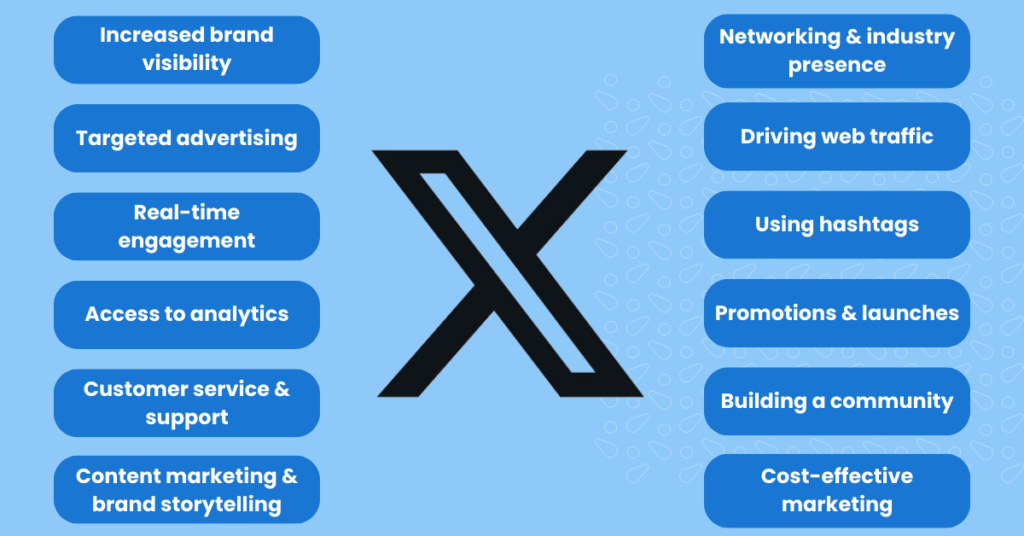
- Increased brand visibility: A Twitter business profile offers increased visibility to your brand. More eyes on your business means more customers and a stronger presence in the market.
- Targeted advertising: Twitter lets you target your ads based on what people like, where they live, and how they behave, ensuring your message reaches the right crowd.
- Real-time engagement: Twitter is all about instant connections. Got a new product? Share it right away. Customer has a question? Answer it immediately. This real-time customer engagement makes the platform perfect for keeping your finger on the pulse and staying connected with your audience.
- Access to analytics: Twitter provides businesses with analytics tools to track who’s loving their tweets and how their content is performing. These insights help them tweak their strategy and make data-driven decisions.
- Customer service and support: Twitter can be your customer service superhero. It’s a quick, direct way to help your customers, solve their problems, and show everyone that you genuinely care.
- Content marketing and brand storytelling: Every brand has a story, and Twitter is a great stage to tell it. From updates and fun facts to behind-the-scenes glimpses — share whatever you want in line with your brand perception. After all, it’s your space to shape how people see your brand.
- Networking and industry presence: Twitter is an excellent platform for networking with industry peers, influencers, and potential partners. It’s also a goldmine for keeping up with the latest industry buzz.
- Driving web traffic: Every tweet can be a signpost directing people to your website or blog. By sharing links to your content, you can use Twitter to invite more visitors to your online platforms, leading to increased leads, sales, and visibility.
- Using hashtags: Hashtags are like secret paths that lead people to your business’s content. Use them wisely, and you’ll find your tweets popping up in all sorts of relevant and engaging conversations.
- Promotions and launches: Got something new brewing? Twitter is the ideal place to whip up the excitement. The viral nature of tweets can help generate buzz around your launches or special promotions.
- Building a community: Businesses can build a community of loyal followers on Twitter. Engage with your audience and share valuable content, and you’ll see a fan base growing around your brand.
- Cost-effective marketing: Twitter marketing can be a wallet-friendly way to spread the word about your brand compared to other marketing channels. Even its paid ads can be more affordable than other platforms.
What are the disadvantages of a Twitter business profile?
While Twitter business profiles offer numerous advantages, there are also some challenges to consider. Here are some of the key disadvantages:
- Time-consuming management: Maintaining an active and engaging Twitter business account can be challenging. Regularly crafting tweets, responding to messages, and engaging with the audience can take a lot of time, especially for small teams.
- Risk of negative exposure: Because of Twitter’s public and real-time nature, negative feedback or criticism can quickly escalate and become visible to a wide audience. Therefore, you’ve got to be on your toes to manage your brand’s reputation.
- Limited message length: With a 280-character limit per tweet, conveying complex messages or detailed information can be tricky. That’s why it may not be suitable if you have a lot to say.
- Rapid pace of content: Tweets fly by fast. This fast-paced nature of Twitter can make your content quickly become outdated or lost in followers’ feeds. So, you’ll have to post frequently to stay relevant, which can be demanding in terms of content creation.
- Analytics and ROI measurement: While Twitter provides analytics features, measuring the ROI for your social media management efforts on this platform can be less straightforward than more direct marketing channels.
Ace social media marketing with Birdeye
Generate social posts in minutes, monitor engagement, and manage social across locations – from a single dashboard.
Why should you have a Twitter business profile?
Using Twitter for business growth can be a smart move for your brand, irrespective of the size of your business. Here are a few compelling reasons to have a Twitter business account.
- Twitter lets you build real, personal connections with your customers through direct, engaging conversations.
- Twitter is ideal for location-based marketing, connecting you directly with the local community and trends.
- Twitter acts as a fast-response platform, enhancing your customer service with public, real-time interactions.
- Twitter is a great tool for keeping an eye on what people are saying about your brand and your competition.
- Twitter is a crucial element of a well-rounded social media marketing strategy, complementing other platforms.
- Twitter is perfect for targeting young audiences who are active and influential on the platform.
How to create a Twitter business profile?
Creating a business Twitter account starts just like setting up a personal one. Once your account is up and running, you can switch it to a Twitter for Professionals account. This upgrade unlocks access to handy analytics and a suite of other tools tailored to business needs.
Let’s now walk through the steps for creating a Twitter business profile:
Step 1: Visit the Twitter website and click the “Sign up” button to create an account.
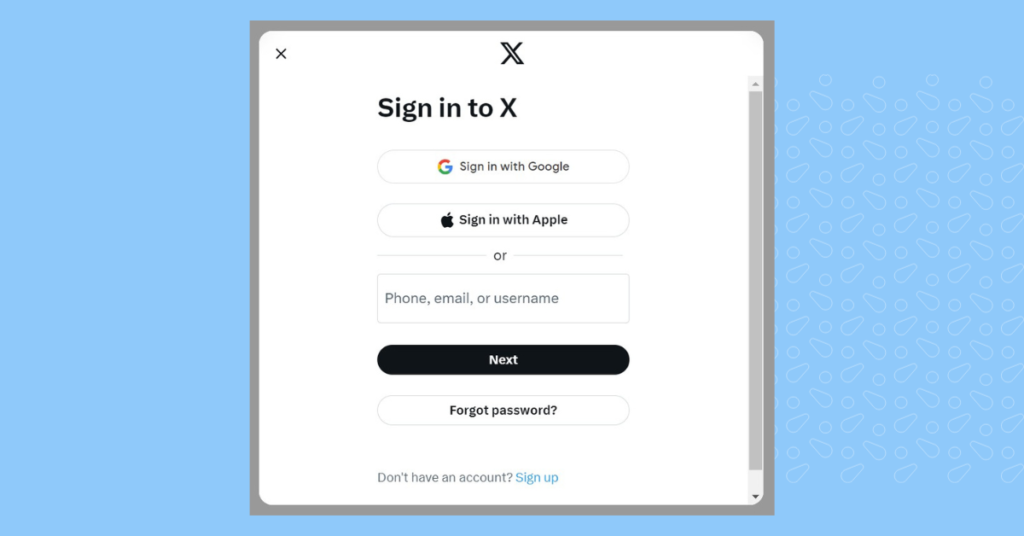
Step 2: If you don’t want to sign up with your Google account or Apple ID, you can click ‘Create account’.
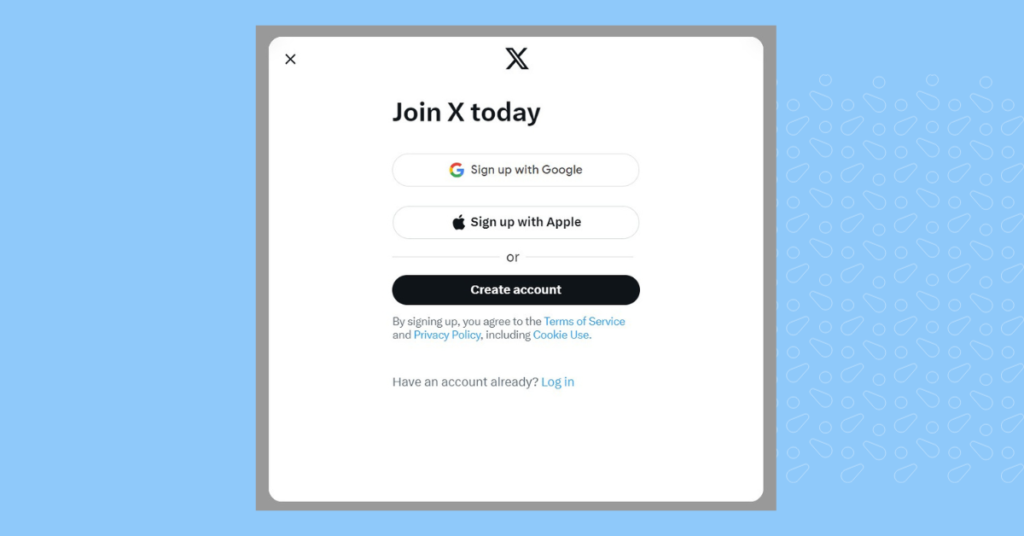
Step 3: Enter the following details:
- Your name
- Business phone number or business email address
- Date of birth (This won’t be publicly available)
Once you’re done, click ‘Next’.
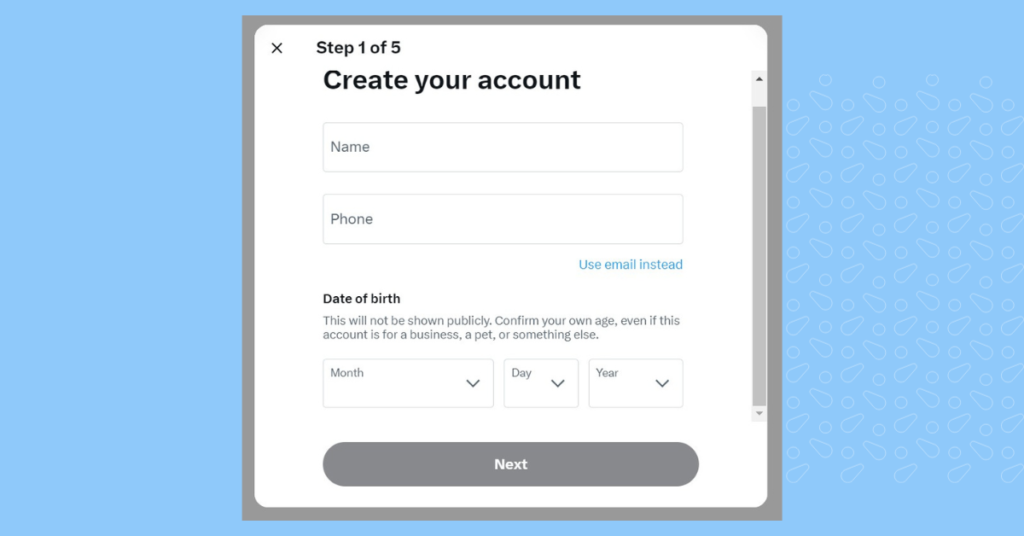
Step 3: Select the checkbox if you want to track where you see Twitter content across the web. Twitter will use this data to customize your experience. You can opt out if you don’t want to use this feature.
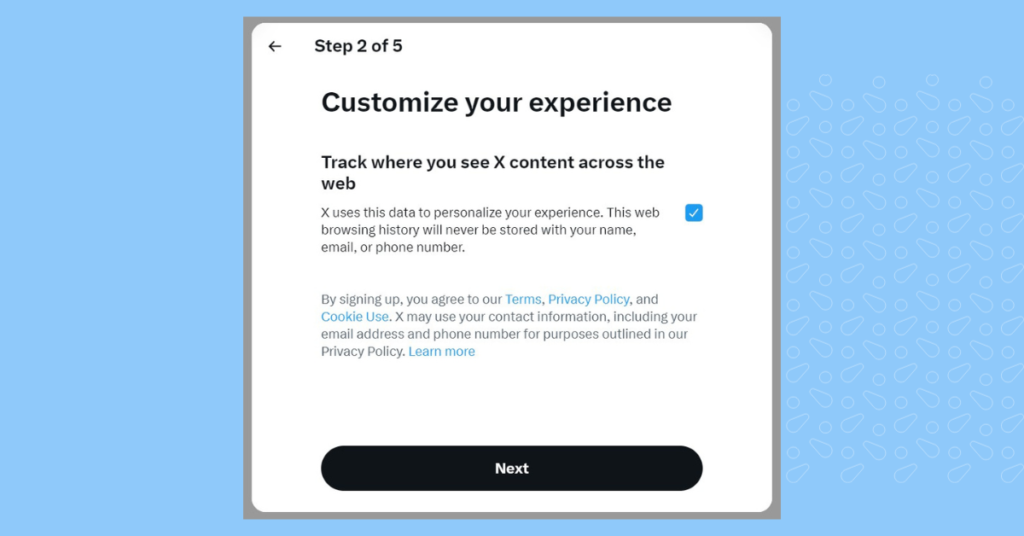
Step 4: Click ‘Next’ and then select ‘Sign up’ to create your account.
Step 5: Authenticate your account by completing a few visual or audio challenges.
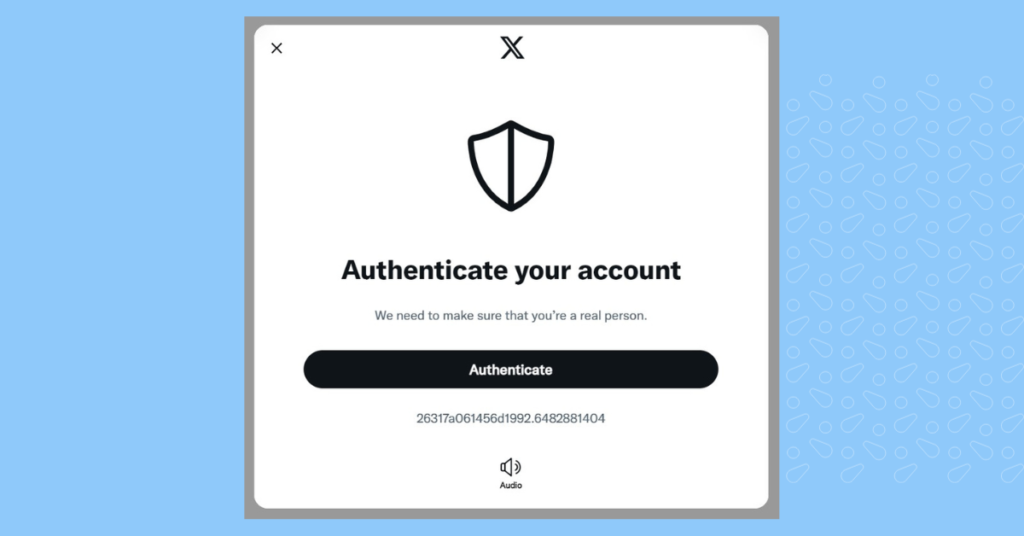
Step 6: Enter the verification code you’ve received on your phone number or email address and click ‘Next’.
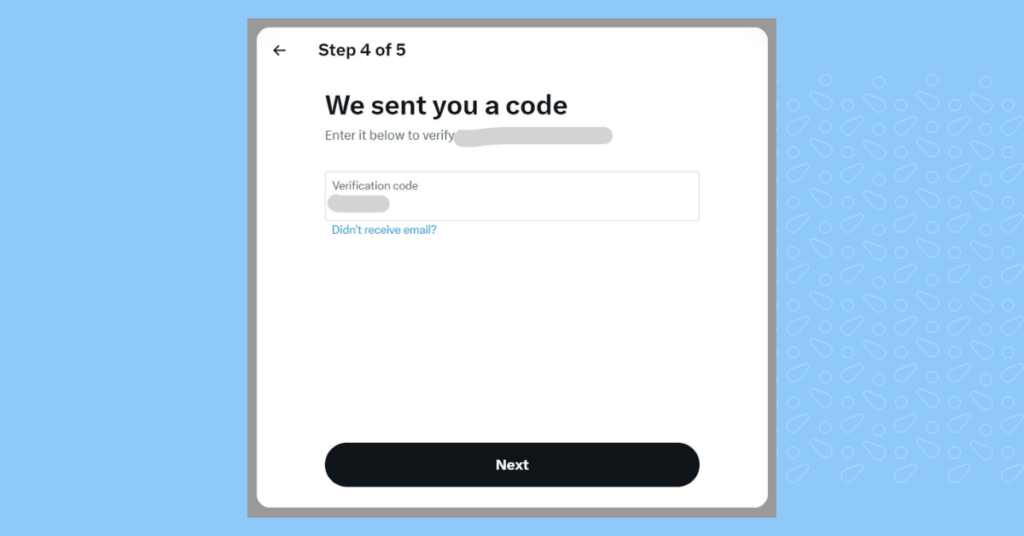
Step 7: Enter a strong password and click ‘Next’.
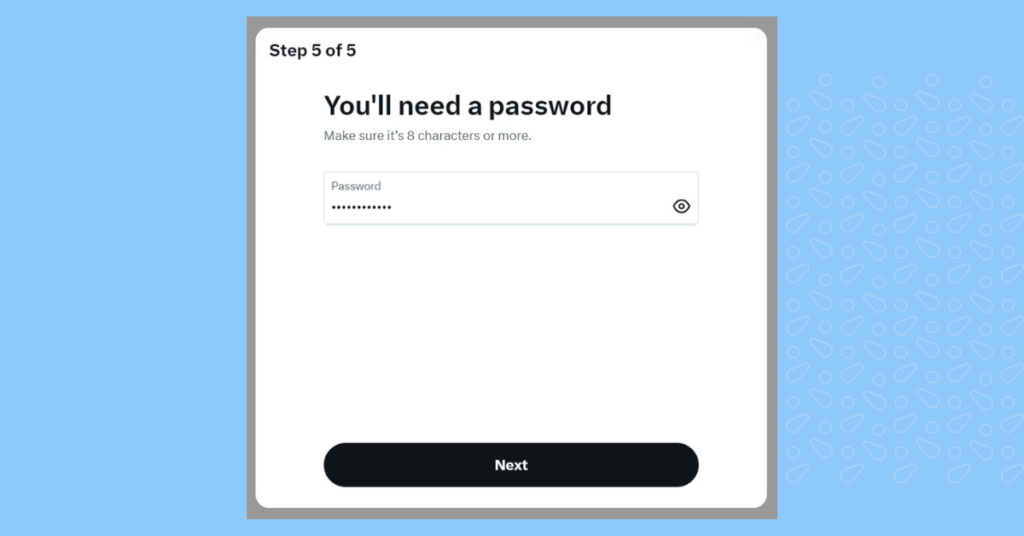
Step 8: Upload a profile picture (preferably your company logo) and click ‘Next’.
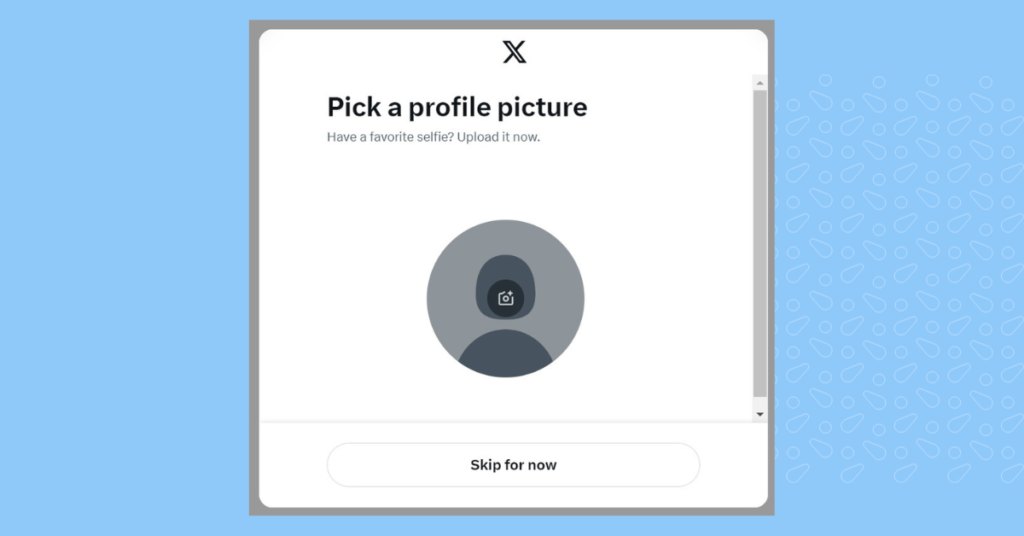
Step 9: Now, you need to enter your Twitter handle and click ‘Next’. Twitter will also ask you to select your preferred language.
If you’re unsure what handle to choose or your desired one is already taken, you can use the Birdeye’s Twitter Username Generator to instantly brainstorm creative, brand-friendly alternatives and check availability.
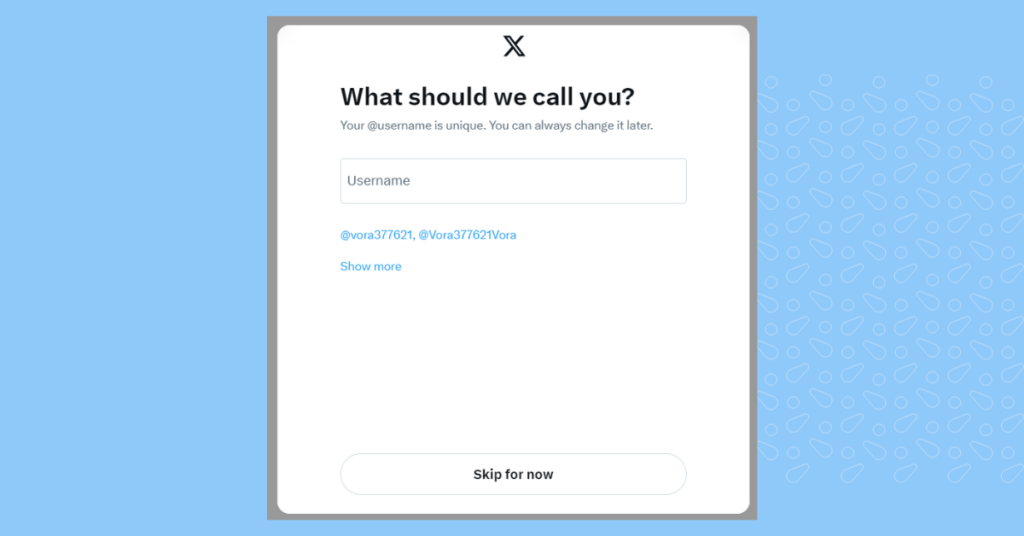
Step 10: Twitter will ask you to choose your interests. For example, if you are opening a Twitter business account for a tourism company, you can select ‘travel’.
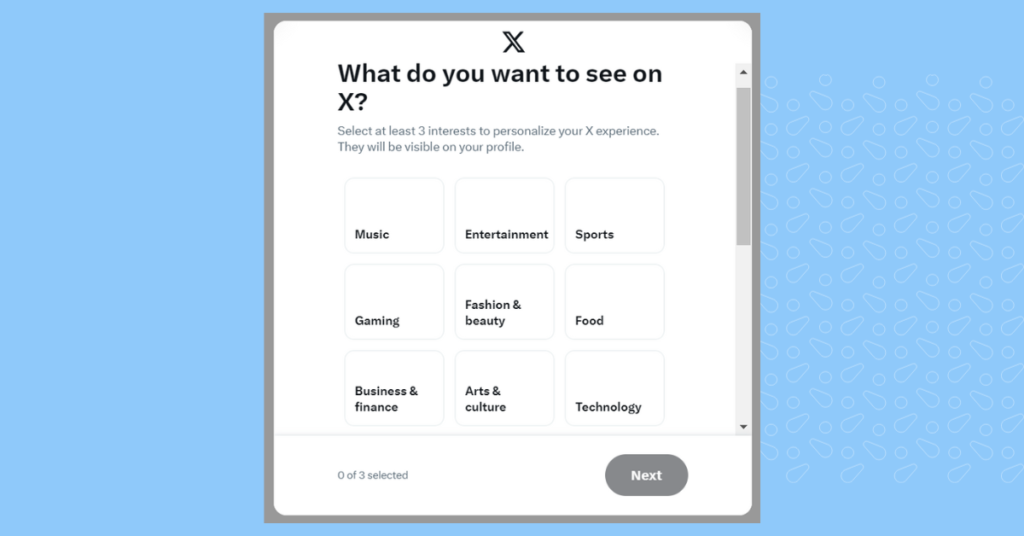
Step 11: Choose your preferred Twitter users to follow.
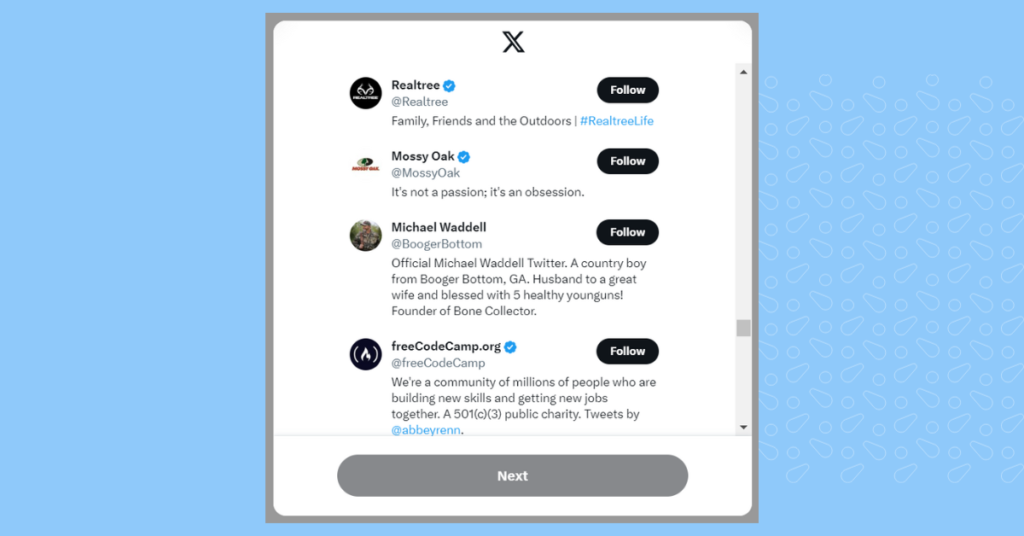
Step 12: Go to your profile and click ‘Edit profile’.
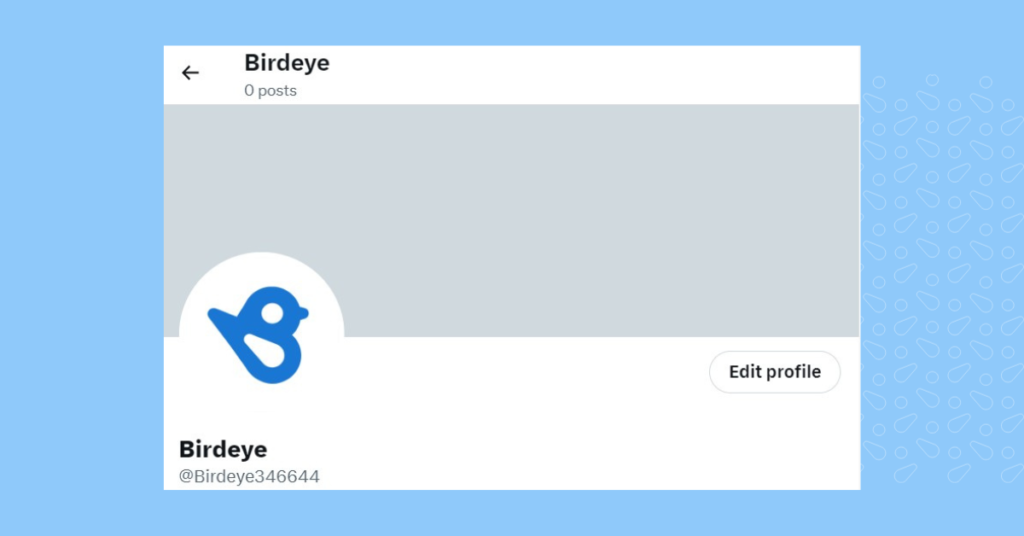
Step 13: Upload a header image for your account. Select a visually appealing image that represents your brand.
Step 14: Add a Bio. Write a brief and engaging bio that describes your business and what you offer in 160 characters.
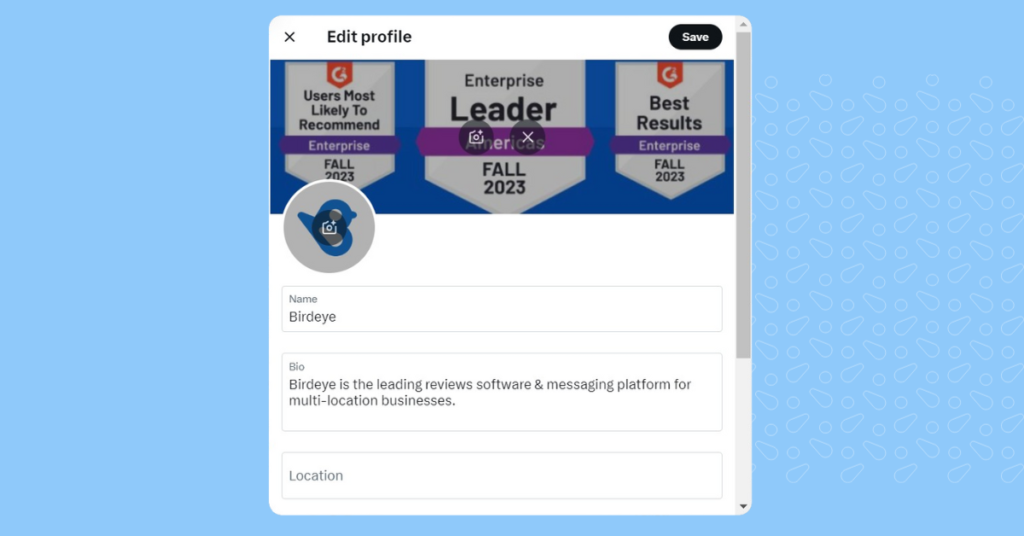
Step 15: Add your business location and the website URL, and click ‘Save’.
That’s it! You’ve successfully created your Twitter business profile. Now, you can switch to a professional Twitter account to access additional tools and features.
How to switch to a Twitter professional account?
Follow the steps below to convert your Twitter business account into a professional account:
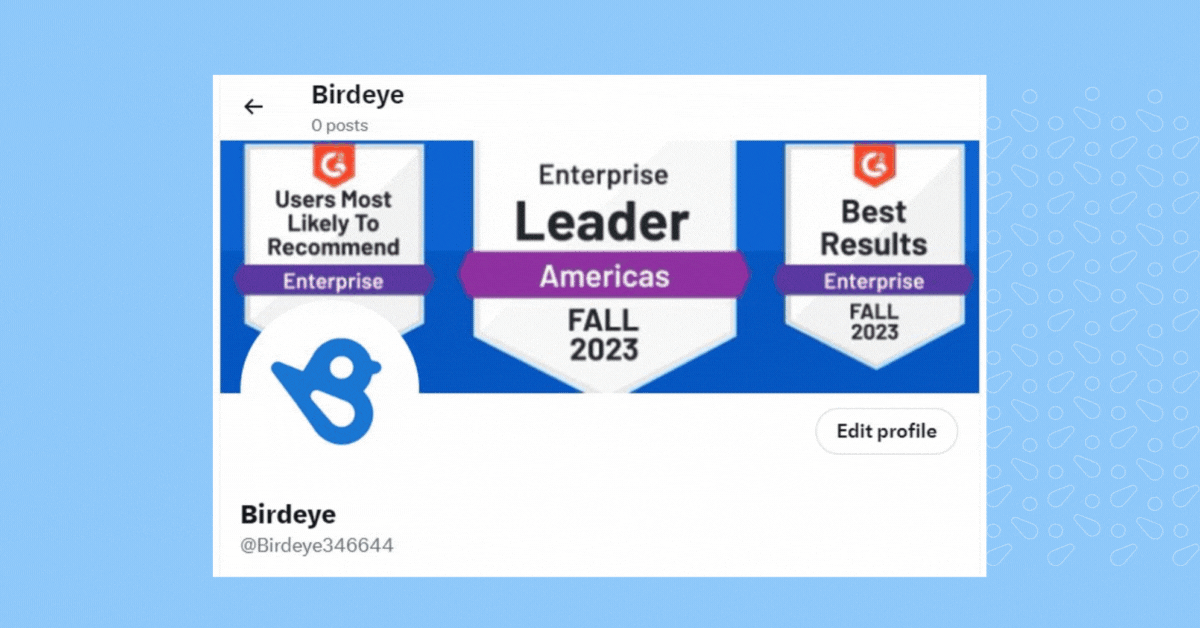
Step 1: Go to your profile and click ‘Edit profile’.
Step 2: Click ‘Switch to professional’.
Step 3: You’ll see a link to Twitter’s Professional Account policy. Go through it and then click the ‘Agree & Continue’ button.
Step 4: Add a 160-character description of your business and click ‘Next’.
Step 5: Select a category to display on your professional Twitter profile.
Step 6: Select an account type. Since you are setting this account up for your brand, choose ‘Business’ and then click ‘Next’.
Now, you’ll see the Professional Home page with more options to further customize your profile.
What are the tools available exclusively to Twitter professional accounts?
Professional accounts on Twitter offer a wide range of tools and features for businesses. These include:
- Professional Home: This is a central dashboard where professionals can track their account performance and find valuable resources and product offerings.
- Professional Category: Users can display their professional category on their profile, making it clear to viewers what type of professional or business they are.
- Profile Spotlights: This feature provides a dedicated space on the profile to highlight key aspects, such as location, hours, and more.
- X Shopping: Twitter Professional Accounts enable direct selling of goods on the platform, enhancing e-commerce capabilities.
- Advertising Options: Twitter Professional Accounts offer access to X Ads and Quick Promote, allowing professionals to expand their reach and engagement on the platform.
How to grow followers on your Twitter business profile?
Growing followers for your Twitter business profile involves a combination of tactics centered around engagement, content strategy, and profile optimization. Here are a few key tips to grow followers on your business account on Twitter.
- Engage actively: Respond thoughtfully to followers’ comments and messages, and interact with posts in your niche to boost visibility and seem more approachable.
- Create valuable Twitter threads: Share detailed insights and stories through Twitter threads to engage your audience with in-depth content.
- Optimize your profile: Craft a complete profile with a clear photo, relevant keywords, and a personal touch to create a positive first impression.
- Join Twitter chats: Participate in industry-related Twitter chats to gain exposure and establish your expertise.
- Do cross-promotion on other platforms: Promote your Twitter on other platforms and your website to attract followers from various channels.
- Consistent posting: Regularly post engaging content, ideally one to four times a day. Ensure variety in your content (educational, entertaining, and updates) to cater to diverse audience interests.
- Use visual content: Enhance posts with videos and photos for higher engagement compared to text-only content.
- Tag other accounts: Tag relevant accounts, including clients and industry leaders, to increase engagement and visibility.
- Utilize relevant hashtags: Incorporate trending and industry-specific hashtags in your tweets to increase visibility and reach a wider audience.
- Pin your best tweets: Use your pinned tweet to highlight important or engaging content at the top of your profile.
- Incorporate keywords in Bio: Include relevant keywords in your bio to describe your business, making it more discoverable to the right audience.
- Seek Twitter verification: Aim for Twitter verification to enhance credibility and stand out to potential followers.
The secret to winning hearts on Twitter, particularly for business accounts, is all about skillfully balancing brand promotion with genuine follower engagement. Keep it real, stay on your toes with responses, and show up consistently. That’s how you build a tribe of loyal fans who hang onto your every tweet.
FAQs about creating a Twitter business profile
Having a separate Twitter account for your business is advisable if your personal and business brands target different audiences or have distinct identities. This separation allows for more targeted content strategies, professional branding, and clearer insights into audience engagement specific to your business. Additionally, it helps in maintaining a professional image and effectively managing public relations.
Yes, Twitter is useful for small businesses. It offers a cost-effective way to engage with customers, increase brand visibility, and share content. It’s also great for networking and market research.
Yes, Twitter is free for business use. Businesses can create an account, post, and engage with their audience at no cost. However, optional paid advertising is available for those looking to expand their reach.
Integrate your Twitter business profile with Birdeye for maximum growth
You can promote your business on various social media platforms to significantly enhance your brand’s visibility. Birdeye offers an efficient way to integrate with your business’s Twitter account, helping you automate various promotional activities and engagement processes.
- It allows you to showcase your top reviews from various review platforms by automatically posting them as tweets on your business’s Twitter profile directly through your Birdeye account.
- After integration, Birdeye enables you to respond to tweets on your Twitter account directly from within your Birdeye account.
- It simplifies the process of posting brand-related content on your Twitter account. Post publishing, Birdeye facilitates engagement with your audience, allowing you to interact with followers directly from the Birdeye interface.
To learn more about how Birdeye can stimulate your business growth, watch the free demo today.

Originally published
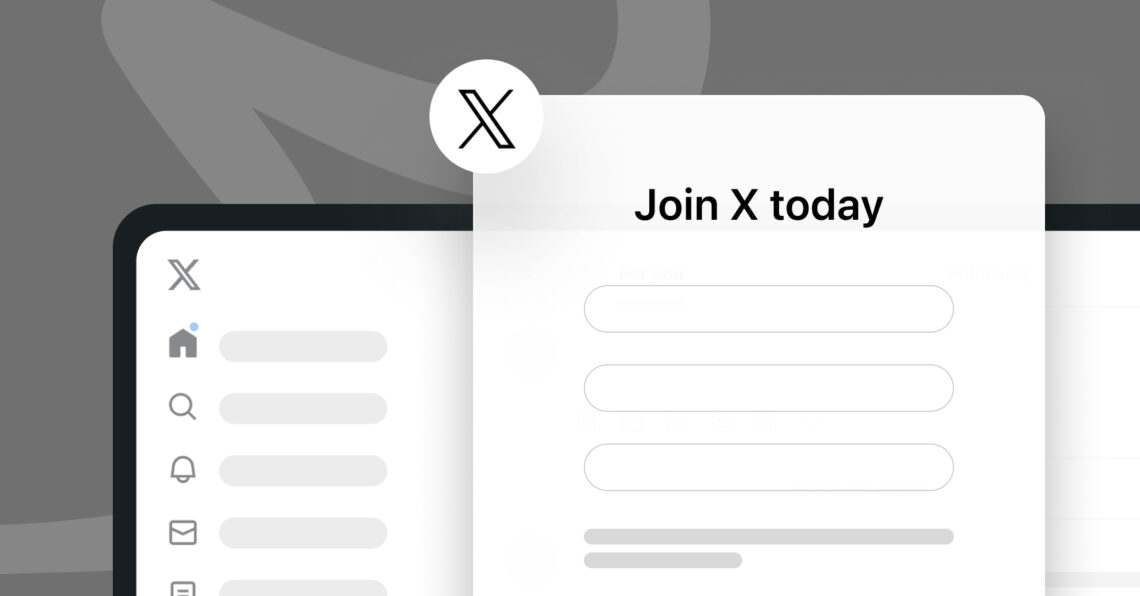


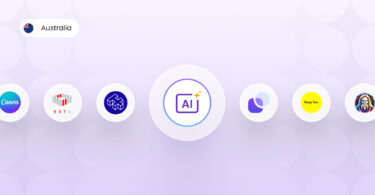
![[Feature image ] Customer-centric marketing- how to win, retain, and grow your customer base in 2025](https://birdeye.com/blog/wp-content/uploads/Feature-image-Customer-centric-marketing-how-to-win-retain-and-grow-your-customer-base-in-2025-375x195.jpg)




